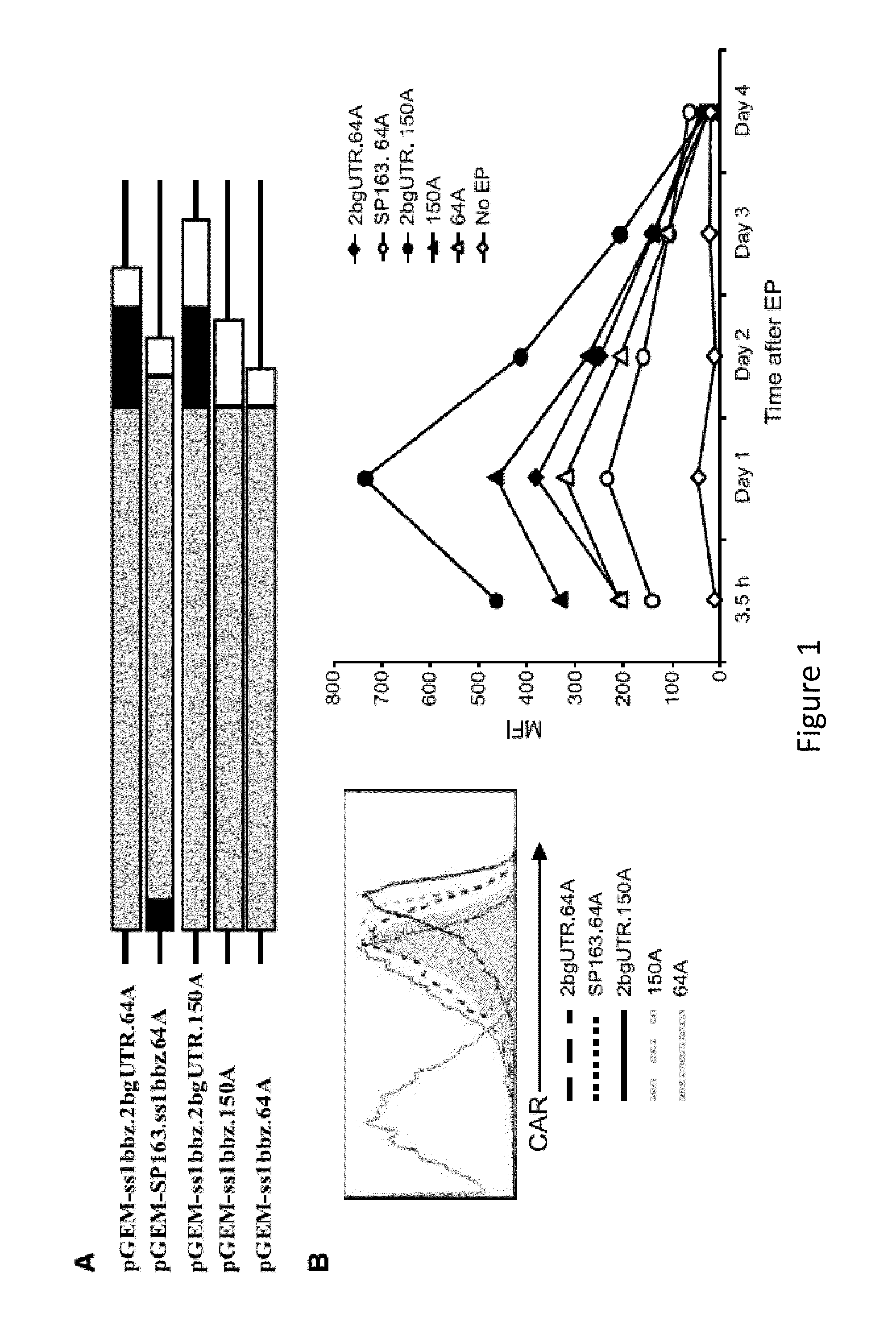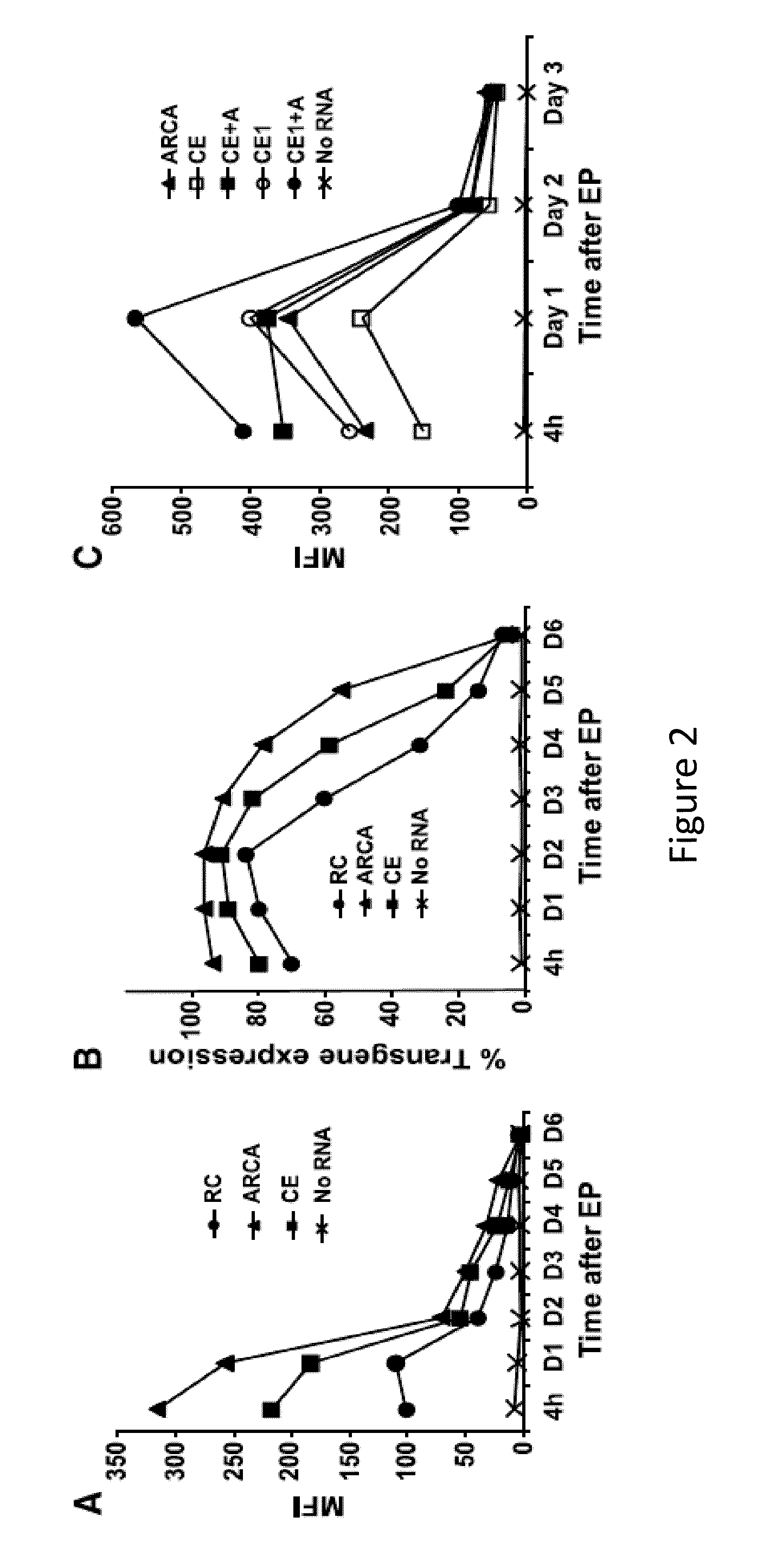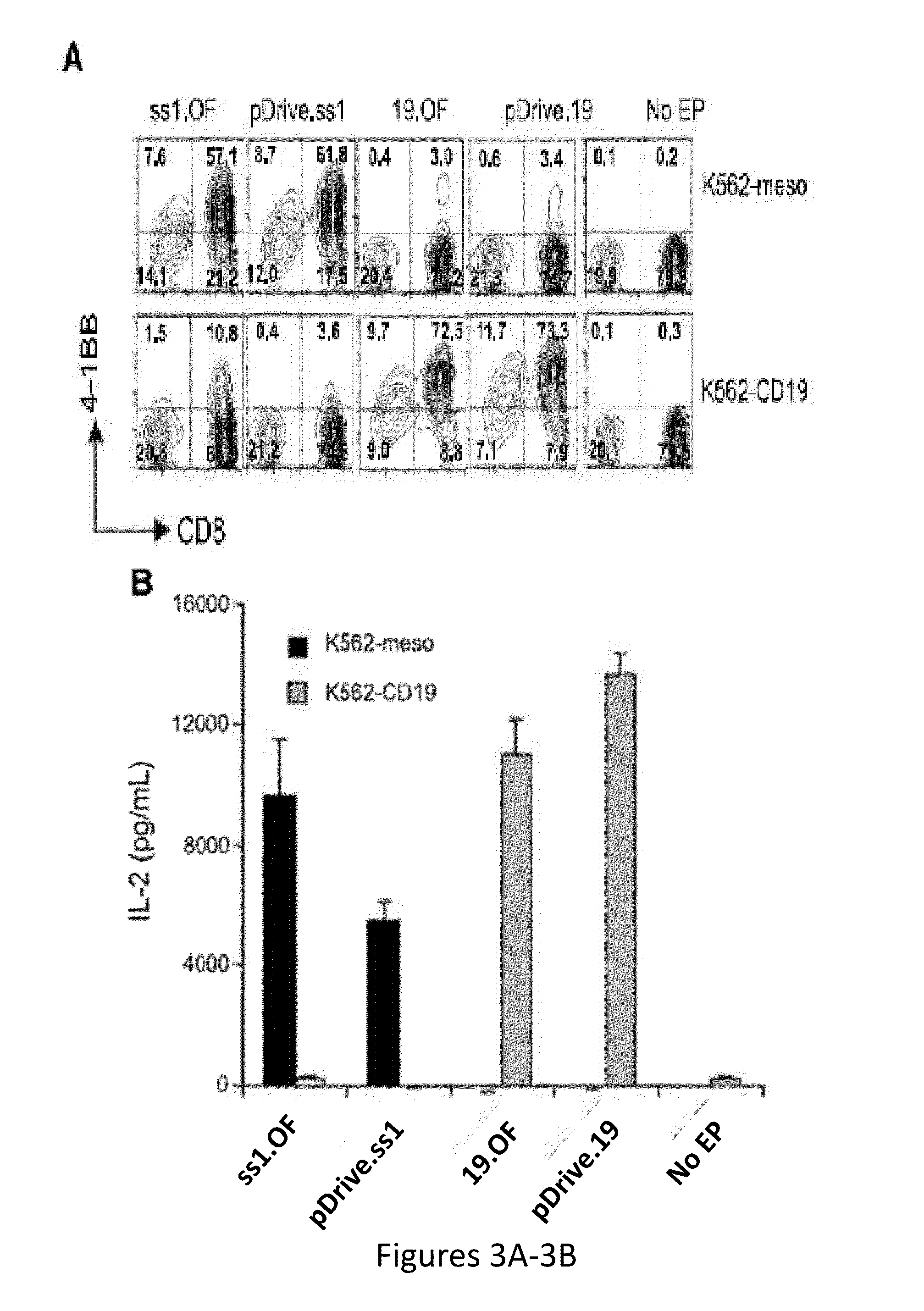RNA engineered t cells for the treatment of cancer
a technology of t cells and cancer, applied in the direction of viruses, peptides, drug compositions, etc., can solve the problems of poor immunogenicity of leukemic cells, lack of efficacy of donor lymphocyte infusion, and difficulty in iterative clinical trials which rapidly incorporate car design innovations
- Summary
- Abstract
- Description
- Claims
- Application Information
AI Technical Summary
Benefits of technology
Problems solved by technology
Method used
Image
Examples
experimental examples
[0242]The invention is further described in detail by reference to the following experimental examples. These examples are provided for purposes of illustration only, and are not intended to be limiting unless otherwise specified. Thus, the invention should in no way be construed as being limited to the following examples, but rather, should be construed to encompass any and all variations which become evident as a result of the teaching provided herein.
[0243]Without further description, it is believed that one of ordinary skill in the art can, using the preceding description and the following illustrative examples, make and utilize the compounds of the present invention and practice the claimed methods. The following working examples therefore, specifically point out the preferred embodiments of the present invention, and are not to be construed as limiting in any way the remainder of the disclosure.
example 1
Electroporated Autologous T Cells Expressing a Chimeric Antigen Receptor Mediates Regression of Human Disseminated Tumor
[0244]Redirecting T lymphocyte antigen specificity by gene transfer can provide large numbers of tumor-reactive T lymphocytes for adoptive immunotherapy. However, there may be safety concerns associated with viral vector production in the clinical application of T cells expressing chimeric antigen receptors (CAR). It is believed that T lymphocytes can be gene modified by RNA electroporation without integration-associated safety concerns. To establish a safe platform for adoptive immunotherapy, the vector backbone for RNA in vitro transcription was optimized to achieve high-level transgene expression. CAR expression and function of RNA-electroporated T cells was detected up to a week after electroporation. The results presented herein demonstrate that multiple injections of RNA CAR—electroporated T cells mediated regression of large vascularized flank mesothelioma t...
example 2
Treatment of Advanced Leukemia in Mice with mRNA Engineered T Cells
[0292]While Cytotoxic T lymphocytes (CTLs) bearing stably expressed CARs generated by integrating viral vectors are efficacious and have potential long-term persistence, an alternative therapy is to use transiently expressing CARs where T cells are electroporated with an optimized in vitro transcribed RNA encoding a CAR against a desired target (e.g. CD19). The results presented herein demonstrate that T cells expressing an anti-CD19 CAR introduced by electroporation with optimized mRNA were potent and specific killers of CD19 target cells. CD19 RNA CAR T cells given to immunodeficient mice bearing xenografted leukemia rapidly migrated to sites of disease and retained significant target-specific lytic activity. Unexpectedly, a single injection of CD19 RNA CAR T cells reduced disease burden within 1 day after administration, resulting in a significant prolongation of survival in an aggressive leukemia xenograft model....
PUM
| Property | Measurement | Unit |
|---|---|---|
| time period | aaaaa | aaaaa |
| time period | aaaaa | aaaaa |
| incubation time period | aaaaa | aaaaa |
Abstract
Description
Claims
Application Information
 Login to View More
Login to View More - R&D
- Intellectual Property
- Life Sciences
- Materials
- Tech Scout
- Unparalleled Data Quality
- Higher Quality Content
- 60% Fewer Hallucinations
Browse by: Latest US Patents, China's latest patents, Technical Efficacy Thesaurus, Application Domain, Technology Topic, Popular Technical Reports.
© 2025 PatSnap. All rights reserved.Legal|Privacy policy|Modern Slavery Act Transparency Statement|Sitemap|About US| Contact US: help@patsnap.com



